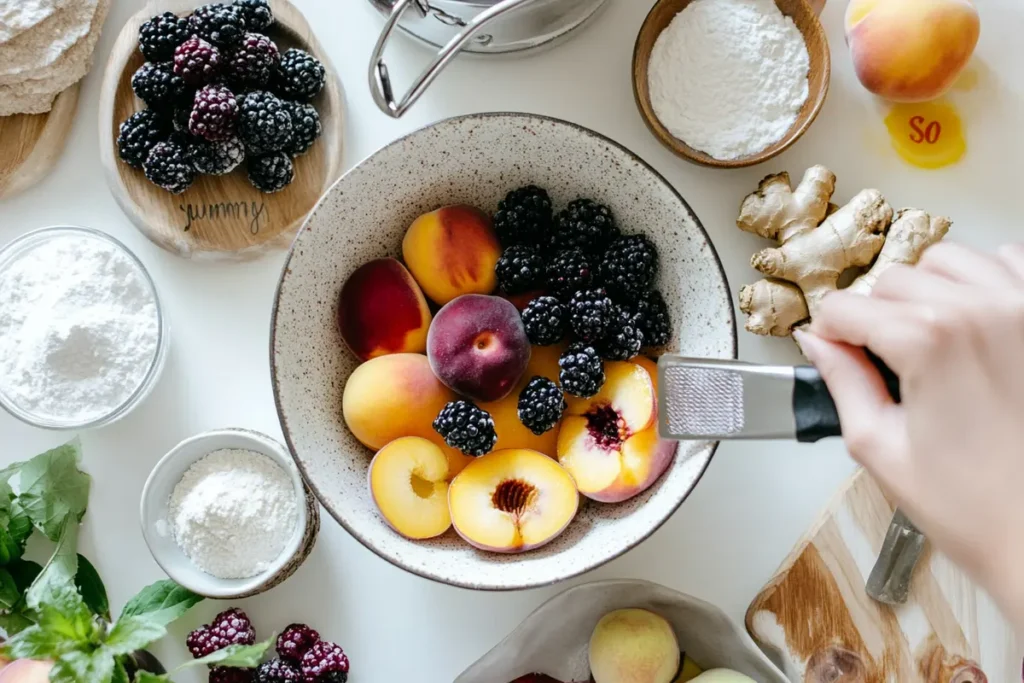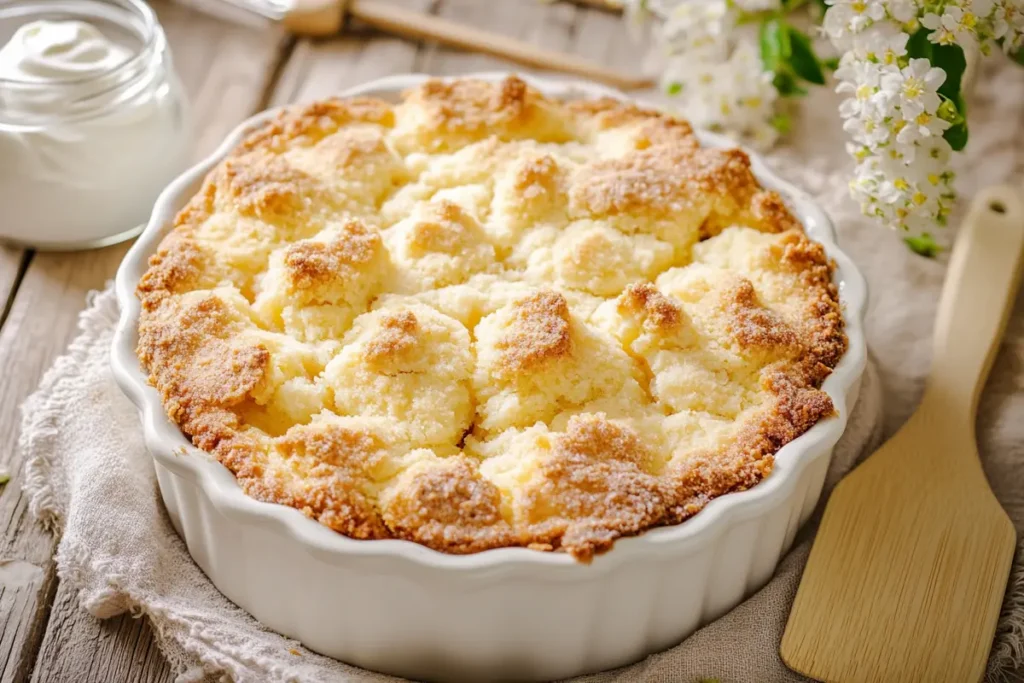Cobbler is a beloved dessert known for its fruity filling and golden, buttery topping. But achieving the perfect cobbler filling—one that is thick, luscious, and holds together without being runny or overly stiff—can sometimes be tricky. If you’ve ever wondered, “How do you thicken cobbler filling?”, you’re not alone. This comprehensive guide will walk you through the science, techniques, and tips to achieve the perfect cobbler consistency every time.
Why Does Cobbler Filling Need Thickening?
The filling of a cobbler typically consists of fresh or frozen fruit, sugar, and sometimes spices. As the fruit cooks, it releases juices, creating a delicious syrupy liquid. However, without proper thickening, this liquid can result in a runny cobbler that lacks the hearty, cohesive texture we all crave.
Thickening the filling serves several purposes:
- Enhanced Texture: Ensures the filling clings to the fruit and creates a delightful contrast to the crispy topping.
- Better Presentation: Prevents the cobbler from looking soupy when served.
- Flavor Concentration: Helps balance the natural fruit juices with the added sugar and spices.
Key Ingredients for Thickening Cobbler Filling

Several ingredients can help thicken cobbler filling. Each has its own properties and works best in specific scenarios. Here’s a breakdown:
1. Cornstarch
- How It Works: Cornstarch is a popular thickener that reacts with heat and liquid to form a gel.
- How to Use: Mix cornstarch with a small amount of cold water to create a slurry before adding it to the fruit mixture. This prevents clumping.
- Best For: Juicy fruits like berries, cherries, or peaches.
- Pros: Creates a clear, glossy finish.
- Cons: May lose effectiveness if overcooked.
2. Flour
- How It Works: Flour absorbs liquid and thickens as it cooks, though it requires more quantity compared to cornstarch.
- How to Use: Sprinkle flour directly onto the fruit or mix it with sugar before combining with the fruit.
- Best For: Apples, pears, or other firm fruits with moderate juice release.
- Pros: Readily available and easy to use.
- Cons: Can create a cloudy filling if overused.
3. Tapioca
- How It Works: Tapioca granules swell and absorb moisture, creating a thick, gel-like consistency.
- How to Use: Sprinkle instant tapioca over the fruit and let it sit for 10-15 minutes to absorb juices before baking.
- Best For: Stone fruits like peaches or plums.
- Pros: Produces a clear, glossy texture and holds up well during reheating.
- Cons: Can create a slightly chewy texture if not fully cooked.
4. Arrowroot Powder
- How It Works: Arrowroot functions similarly to cornstarch but is more stable when reheated.
- How to Use: Mix with cold water to form a slurry before adding to the fruit mixture.
- Best For: Acidic fruits like rhubarb or citrus.
- Pros: Maintains clarity and thickens at lower temperatures.
- Cons: Expensive compared to other thickeners.
5. Pectin
- How It Works: Pectin, a natural fiber found in fruit, thickens when combined with sugar and heat.
- How to Use: Add commercial pectin to the fruit mixture or use naturally high-pectin fruits like apples and blackberries.
- Best For: Jams, jellies, and cobblers with mixed fruit.
- Pros: Natural and adds a subtle sweetness.
- Cons: Requires precise measurements for proper thickening.
Step-by-Step Guide to Thicken Cobbler Filling
Now that you know the ingredients, here’s how to use them to create a perfectly thick cobbler filling.
1. Prepare the Fruit
Start with fresh or frozen fruit, depending on your preference. If using frozen fruit, thaw it first and drain any excess liquid. This prevents the cobbler from becoming overly watery.
2. Add Sweetener and Spices
Mix the fruit with sugar (granulated, brown, or a mix of both) and spices like cinnamon, nutmeg, or vanilla extract. The sugar will draw out the juices from the fruit, which will later combine with the thickener.
3. Choose and Prepare Your Thickener
- Cornstarch or Arrowroot: Create a slurry by mixing 1-2 tablespoons of thickener with an equal amount of cold water for every 4 cups of fruit.
- Flour: Mix 2-3 tablespoons directly with the sugar before combining with the fruit.
- Tapioca: Sprinkle 2 tablespoons of instant tapioca evenly over the fruit.
4. Mix Thoroughly
Ensure the thickener is evenly distributed throughout the fruit mixture. This prevents clumps and ensures even thickening during baking.
5. Bake and Monitor
Transfer the fruit mixture to a baking dish, top with your cobbler crust, and bake as directed. The filling will thicken as the cobbler cooks and cools. Look for bubbling around the edges to ensure the thickener is activated.
6. Let It Rest
Allow the cobbler to cool for at least 15-20 minutes before serving. The filling will set further as it cools, creating the perfect consistency.
Common Mistakes When Thickening Cobbler Filling
Even with the best intentions, thickening cobbler filling can sometimes go awry. Avoid these common mistakes:
- Skipping the Slurry Step: Adding cornstarch or arrowroot directly to the fruit can result in lumps.
- Using Too Much Thickener: Over-thickening can make the filling gluey or stiff.
- Neglecting Cooling Time: The filling thickens significantly as it cools, so don’t rush to serve.
- Overcooking Cornstarch: Prolonged baking at high heat can break down cornstarch, resulting in a runny filling.
Tips for Specific Fruits
Different fruits release varying amounts of juice, so it’s important to tailor your thickening method:
- Berries (Strawberries, Blueberries, Blackberries): High in juice content; use cornstarch or tapioca.
- Apples and Pears: Low moisture; flour works well.
- Stone Fruits (Peaches, Plums): Moderate moisture; tapioca or cornstarch provides the best results.
- Rhubarb: Extremely tart and juicy; arrowroot or cornstarch stabilizes the acidity.
FAQs About Thicker Cobbler Fillings
1. How Do You Thicken Cobbler Filling Without Cornstarch?
If you don’t have cornstarch, you can use flour, tapioca, or arrowroot powder. Each of these thickeners works well depending on the type of fruit and your desired consistency.
2. Can I Thicken Cobbler Filling After Baking?
It’s challenging to thicken cobbler filling after it’s baked, but you can try reheating it and stirring in a slurry of cornstarch or arrowroot with water. Alternatively, serve it with ice cream or whipped cream to offset a slightly runny filling.
3. What’s the Best Thickener for a Gluten-Free Cobbler?
Tapioca and arrowroot are excellent gluten-free options. Both provide a clear, glossy finish and work well with most fruits.
4. How Much Thickener Should I Use?
For every 4 cups of fruit:
- Cornstarch: 1-2 tablespoons.
- Flour: 2-3 tablespoons.
- Tapioca: 2 tablespoons.
- Arrowroot: 1-2 tablespoons.
5. Can I Use Gelatin to Thicken Cobbler Filling?
Gelatin is not recommended for cobbler filling, as it doesn’t perform well under the heat required for baking.
Serving and Storing Thickened Cobbler

- Serving: Serve cobbler slightly warm with a scoop of vanilla ice cream or whipped cream to complement the thickened filling.
- Storing: Refrigerate leftovers in an airtight container for up to 3 days. Reheat in the oven to preserve the thickened texture.
Conclusion
Thickening cobbler filling might seem intimidating, but with the right techniques and thickeners, you can achieve the perfect consistency every time. Whether you prefer the glossy finish of cornstarch, the stability of flour, or the natural touch of tapioca, the answer to “How do you thicken cobbler filling?” lies in understanding your ingredients and tailoring them to your recipe.
Experiment with different methods to find what works best for you and your favorite fruits. Happy baking!